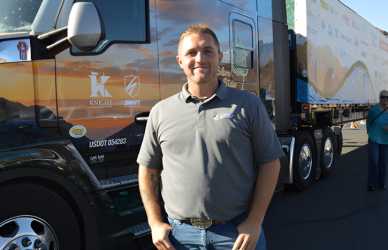In February, Uptake made a deal with Daimler Truck that could potentially save truck fleets from costly repairs. Using predictive analytics and data-as-a service model, the software gives early warning on any of 160 potential faults or failures. With it now in place for regular cars – how will this breakthrough technology play out for driverless trucks?
“You’re going to see a greater amount of sensor data and information coming out of each one of these trucks,” said Jim Lowell, vice president of technology for Chicago-based Uptake. “They’re looking at the environment more and they’re looking at themselves more and so you’ve got more to work with.”
Great information to have, but that doesn’t mean it won’t be without challenges.
“There’s probably like 80% overlap, but there’s going to be things in the autonomous trucks that aren’t in the existing trucks,” Lowell said. “Servos and controllers to actually operate the vehicle and probably a host of other things and electronics and so on and sensors.”
Autonomous trucks are equipped with an immense array of sensors, all generating a wealth of data. Unfortunately, the low number of autonomous trucks on the road combined with this being a relatively new technology limits our capacity to mine and analyze the invaluable insights they contain.
“I can tell you sensor failures on a large fleet, because I can look at thousands of trucks over dozens of years, and I can say with accuracy what’s going on,” Lowell said.
Autonomous truck technology is rising, but its sensors may have unintended effects on non-automated vehicles as well.
“It might be interesting to see if autonomous trucks don’t have some kind of a reverse effect where [fleets] start saying, ‘I want more sensors on my nonautonomous trucks because they really help,’” Lowell said.
This is already happening with some advanced driver assistance systems such as Detroit Assurance 5.0 from Daimler Truck and Wingman Fusion safety software from Bendix.
Observing the rapid advancement of electric and autonomous trucking, Lowell speculates that a convergence of these technologies could be on the horizon.
“You’re still going to see vendors cooperating to build vehicles,” he said. “What will change is that there’s a small amount of new technology that’s required in order for an autonomous truck to operate. There may be some things related to the driver like: ‘Do I need an air conditioning system on a truck that doesn’t have a driver?’”
Source: FreightWaves











